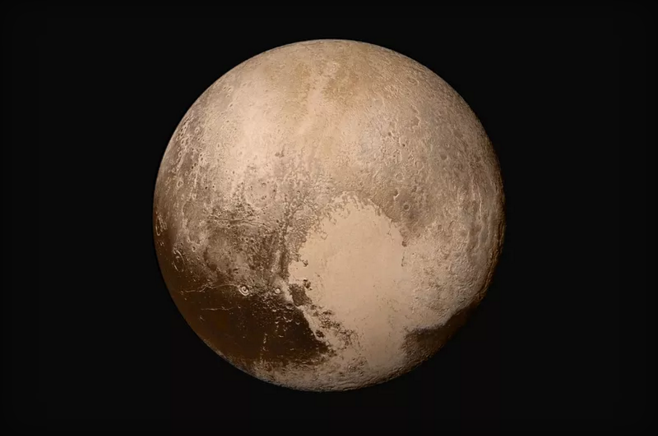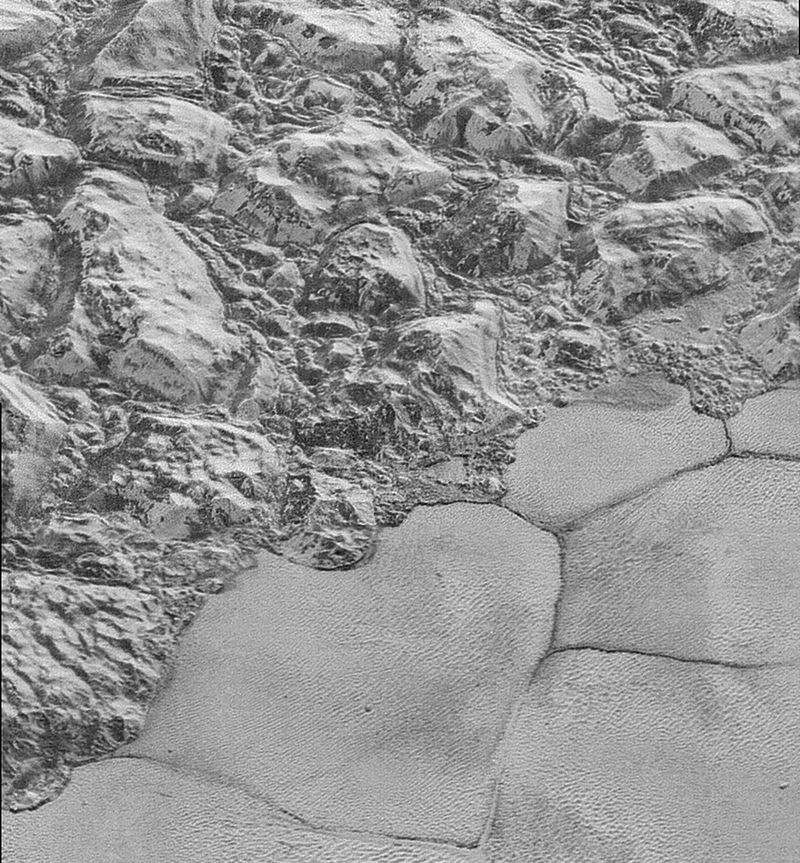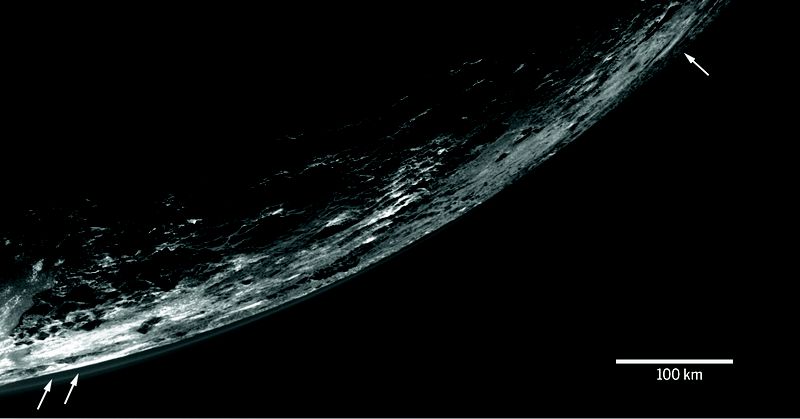
Dwarf planet Pluto, as it turns out, is a complex, geologically diverse world with a surface actively changed for billions of years. This is what we told the data collected by the spacecraft “New horizons”. An eclectic mix of mountains, valleys and plains cover the surface of Pluto. The composition of the surface of the dwarf planet is as vast as the geography of the world. Scientists are gradually coming to the idea that Pluto may be one of the most unique objects in the outer part of the Solar system.
These “New horizons” also allow scientists to better understand the space environment of Pluto. The atmosphere of the dwarf planet was much colder than originally thought, and the air extends further into space than expected. This means that the atmospheric gases flow into the space relatively slowly.
Previously, NASA had already hinted at these details, but now that they elaborated and published in five studies in the journal Science. The spacecraft New horizons flew past the dwarf planet in July 2015. During the flyby cameras and probe devices collected detailed information about the surface, atmosphere and unexpectedly cold environment of Pluto. NASA uploads the data from July, and as more and more information reaches the Earth, scientists can piece together the full picture of how he formed the space rock.
Geology Of Pluto

One study, published recently, shows that Pluto is a powerful blend of geologic landforms, including large pits, craters and valleys, covering most of the surface of the dwarf planet. Through the Northern hemisphere of Pluto stretches a thousand miles and extremely smooth plain called Sputnik Planum. This region is surrounded by mountains of ice several kilometres high, and large glaciers are flocking to the plains from the North. Glacial streams are allowed to reveal a lot of valleys on the surface of Pluto.
Because the area with the plains so sleek, scientists believe that Pluto is changing its active surface since the formation of the Solar system.
“This plane is on Sputnik Planum has no impact craters, says Jeffrey Moore, a researcher at the “New horizons” at the Research center at NASA Ames. She can’t be older than 10 million years”.
The leading explanation is that Pluto has a large solid core composed of radioactive materials. These minerals are heated under the surface, forcing the ice Sputnik Planum materials to melt and smooth out any craters that could be on her before. Internal heating may also be related to the subsurface ocean, lying under the crust of Pluto.
Ice materials Sputnik Planum, believed to be represented mostly frozen nitrogen, which are abundant in the Pluton. This is in addition to many other frozen materials surface, such as methane, carbon monoxide and water ice. Such a variety of matter on the surface is unique to objects of the outer Solar system, said study author Anne Verbiscer, an astronomer at the University of Virginia. Usually materials such as frozen methane and nitrogen are transformed into gases near Saturn or Neptune, thanks to the warmth of the sun. But Pluto, it seems, was far enough away that these materials remain in a frozen form. “The distribution of the different materials on the surface incredibly, says Verbiscer. — We haven’t seen anything like it anywhere else in the Solar system”.
Cold atmosphere

The researchers also found that the atmosphere of Pluto colder than expected. Close to the surface of the dwarf planet temperature ranges from -233 Celsius. As the atmosphere extends farther from Pluto, the temperature rises, up to -163 degrees in the outer atmosphere, perhaps due to the presence of the molecules of the refrigerant of hydrogen cyanide.
Because of these lower temperatures in the gas space leaks less than expected. Higher temperature can cause gases to become more energetic and move faster, allowing them to break free from the gravity of Pluto. But because the upper atmosphere is so cold that the gases of Pluto is closely attached to a small little world. “From Pluto to come off easy, but because it’s so cold, the gases are retained better, as we think,” says Randy Gladstone, an astronomer at the southwest research Institute.
It also means that less gas is carried away by solar activity. Solar winds coming from the Sun constantly slam into the atmosphere of Pluto and the leaking gases push out further into space. The area in which this confusion occurs, is called the region of the solar interaction. But as the atmosphere of Pluto is so compact, this area of interaction is much smaller than expected. “It looks like Pluto more like Mars than comets,” says the study’s author Fran Bagenal, planetology at the University of Colorado.
Unique the results of these studies serve as a starting point for researchers studying Pluto in great detail, because the dwarf planet still harbors many secrets. For example, “New horizons” found several mounds of a few kilometers in height, with deep holes at their centers. Moore and his colleagues believe that this may be cryovolcanic that spew frozen water or other material instead of lava. But no one can say for sure until we conduct computer simulation and confirm if that’s even possible on Pluto. The study of Pluto is also encouraging scientists to explore the Solar system.
“Just wondering what we can see on these bodies,” says Verbiscer.
